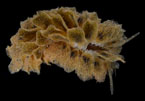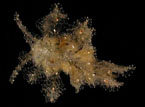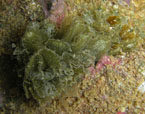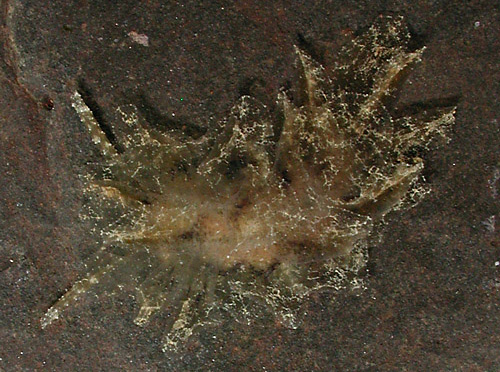| Home |
| Acknowledgments |
| Conventions |
| Glossary |
| Maps |
| References |
| Links |
| Articles |
| Thumbnails |
| Species
list |
| Family |
| Next
species |
Additional Photos

cerata detail

large

young

resting pair

egg mass
_______________
GALLERY

Polybranchia jensenae Madrano, Krug, Gosliner, Kumar & Valdes, 2018

| Maximum size: 90 mm. Identification: This species has broad, thin, leaf-like cerata with serrated edges and rounded tips. The outer face of each ceras is evenly papillate while the inner face has longitudinal veins that become more prominent in larger animals. Irregular networks of white flecks cover the cerata and their bases are cloudy. The pericardium is translucent-gray. Young animals may have one or more enlarged papillae in the middle of the inner face of each ceras. Natural history: Polybranchia jensenae is a moderately common species found at depths of < 1-9 m (< 3-30 ft). It occurs in highly protected to moderately exposed rocky habitats. It's nocturnal but can be found under rocks during the day. When disturbed, it can autotomize its central cerata. However, it does so much less readily than Polybranchia samanthae. Medrano, et. al. (2018) reports observing Hawaiian animals feeding on Caulerpa racemosa when held in dishes. It lays a cream, spiral egg mass. Distribution: Big Island, Maui, Oahu, Kauai and Midway: widely distributed in the Indo-Pacific. Taxonomic notes: Members of this genus were first described from Hawaii by Pease in 1860 under the name Polybranchia pellucida. Later, Kay (1979) used the name Branchophyllum pellucida. However, Medrano, et. al. (2018) states that their descriptions are insufficient to distinguish between Polybranchia jensenae and P. samanthae. So, one or both were probably first reported from Hawaii in Pease, 1860 or Kay, 1979. One or the other may also have been the animal referenced in the text at the bottom of page 185 in Edmondson, 1946. Photo: CP: 35 mm; few cerata autotomized: Hekili Point, Maui; Oct. 21, 2007. Observations and comments: Note 1: ( ) |
| Thumbnails |
Species
list |
Family | Next species | Top |